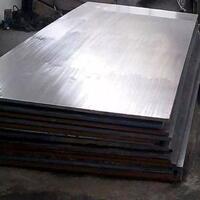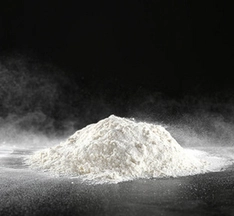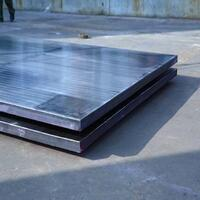1. Introduction
Just 24 hours ago, a major architectural firm in New York unveiled a new sustainable office complex featuring a striking corten steel facade and zinc clad dormers—highlighting the rising trend of metal clad exteriors in eco-conscious design. This surge in popularity isn’t just aesthetic; metal clad systems offer durability, low maintenance, and energy efficiency, making them a go-to choice for modern builders and homeowners alike.

So, what exactly is metal clad? Whether you’re researching a metal clad house, comparing clad metals for industrial use, or wondering about metal clad electrical wire, this guide breaks it all down in plain terms.
2. Understanding Metal Clad: Meaning and Basics
2.1. What Does ‘Metal Clad’ Mean?
The term metal clad (sometimes written as metalclad) refers to a composite material or structure where one metal is bonded—mechanically, metallurgically, or through electroplating—to another. This process, known as cladding, combines the beneficial properties of both metals: for example, the corrosion resistance of stainless steel with the strength and affordability of carbon steel.
Clad metal meaning isn’t limited to sheets or plates—it applies to everything from metal clad siding on homes to aluminum clad pipe insulation in refineries. The goal is always performance enhancement without sacrificing cost-efficiency.
2.2. Common Types of Clad Metals
- Aluminum clad steel: Combines aluminum’s corrosion resistance with steel’s strength; often used in automotive and construction.
- Stainless clad aluminum: Offers the reflectivity and light weight of aluminum with the hygiene and durability of stainless steel—ideal for food processing equipment.
- Titanium clad: Used in aerospace and chemical industries for extreme corrosion resistance.
- Copper nickel clad and cupro nickel clad: Common in marine applications due to saltwater resistance.
- 2024 T3 clad and 7075 T6 clad: High-strength aluminum alloys used in aircraft structures.

These combinations are created through processes like roll bonding, explosion bonding, or electroplating—including techniques like chromium electroplating or electroless nickel coating.
3. Metal Clad in Construction and Architecture
3.1. Exterior Applications: Walls, Roofs, and Facades
One of the fastest-growing uses of metal clad materials is in building exteriors. A metal clad wall or metal clad roof delivers weather resistance, longevity, and sleek modern aesthetics. Popular choices include:
- Corten steel siding: Known for its rust-like appearance that stabilizes over time; corten steel siding cost typically ranges higher than standard steel but offers unmatched visual appeal.
- Zinc metal siding and zinc clad roof: Self-healing surface with a soft gray patina; often seen in European architecture.
- Copper siding: Develops a green patina over decades; prized for heritage and luxury builds.
- Exterior corrugated metal siding and corrugated steel facade: Industrial-chic look with excellent structural rigidity.
- Vertical standing seam metal siding and colorbond standing seam: Clean lines, minimal seams, and superior water runoff—ideal for metal clad buildings in rainy climates.
Brands like PAC Clad offer specialized systems such as PAC Clad standing seam roof, PAC Clad coping, and PAC Clad column covers, which integrate seamlessly into commercial and residential designs.

3.2. Residential Uses: From Sheds to Full Homes
Homeowners are increasingly choosing a steel clad house or metal clad shed for its resilience against fire, pests, and rot. Metal weatherboard and aluminum clad sheet options mimic traditional wood while requiring far less upkeep. For those seeking uniqueness, a zinc clad dormer or corten steel facade can transform a standard build into a statement piece.
Even small elements like metal nameplates or base plates often use clad steel or stainless steel plate for durability and finish.
4. Industrial and Technical Applications
4.1. Metal Clad Wire and Electrical Systems
In electrical engineering, metal clad electrical wire (also called MC cable) features insulated conductors wrapped in an interlocked metal armor—typically aluminum or steel. This provides mechanical protection and grounding, making it suitable for commercial buildings, including in states like Pennsylvania where code compliance is strict.
Variants include aluminum clad steel wire, copper clad wire (Cu clad wire), and aluminum clad stainless steel conductors used in high-performance environments.
4.2. Clad Plates and Sheets in Manufacturing
Industries rely heavily on metal plates like 1/4 steel plate, 3/16 metal plate, or 6061 T6 aluminum plate—often clad for enhanced performance. Examples include:
- Stainless steel diamond plate for slip-resistant flooring.
- Chrome carbide overlay plates for extreme wear resistance in mining.
- Perforated plate and diamond plate sheet metal for filtration and safety grating.
Suppliers offer everything from mild steel plate to exotic alloys like Inconel 718 plate or titanium alloy plate, often available as ‘steel plate for sale’ or ‘aluminum sheet for sale’ through specialized distributors.
5. Materials and Processes Behind Clad Metals
Creating clad metals involves advanced techniques:
- Roll bonding: Layers of metal are hot-rolled together under pressure.
- Explosion bonding: Uses controlled detonation to fuse dissimilar metals.
- Electroplating: Deposits a thin layer of metal (e.g., gold coating, nickel sulfamate) onto a substrate.
Standards like ASTM A387 govern alloy plate quality, while grades such as 316 stainless steel plate or 5083 aluminum plate ensure performance in corrosive or high-stress environments.
6. Conclusion
From the sleek lines of a metal clad house to the rugged reliability of metal clad insulation in industrial plants, ‘metal clad’ represents a versatile and innovative approach to material science. Whether you’re selecting standing seam facade panels, evaluating corten siding cost, or specifying aluminum clad wire for a project, understanding clad metal meaning and applications empowers smarter, more sustainable decisions. As architecture and engineering continue to evolve, metal clad solutions will remain at the forefront—blending form, function, and future-readiness.
Our Website founded on October 17, 2012, is a high-tech enterprise committed to the research and development, production, processing, sales and technical services of ceramic relative materials such as What. Our products includes but not limited to Boron Carbide Ceramic Products, Boron Nitride Ceramic Products, Silicon Carbide Ceramic Products, Silicon Nitride Ceramic Products, Zirconium Dioxide Ceramic Products, etc. If you are interested, please feel free to contact us.
